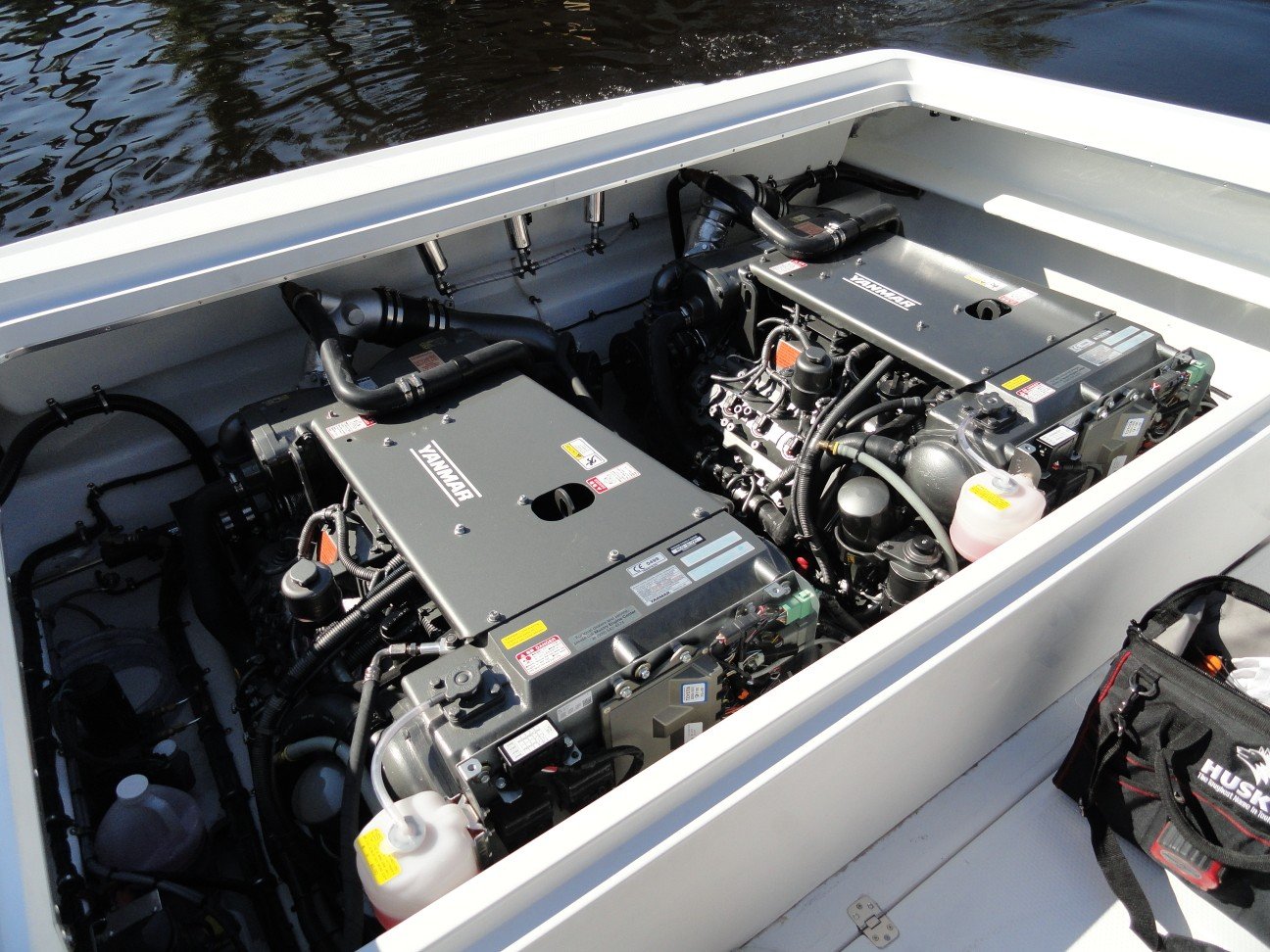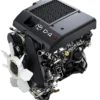Comparing the Yanmar 8LV-350 to Other Diesel Engines in Its Class
Comparing the Yanmar 8LV-350 to Other Diesel Engines in Its Class
Where proper choice of a marine diesel engine is the decision at hand, performance, reliability, fuel efficiency, and serviceability top boat owner and marine industry expert minds. Yanmar 8LV-350 is one of the premium units in the 300–400 horsepower diesel engine category of the numerous options currently out there. But how does it hold up against its other counterparts within its class?
In this in-depth comparison, we will closely examine Yanmar 8LV-350 diesel engine, its spec, compare it to other similar marine engines, and let you know why it’s the perfect option for your boat. If you’re looking to add your boat with an excellent high-performance, dependable diesel engine—you’re in the right place.
1. Introduction to the Yanmar 8LV-350
The Yanmar 8LV-350 is an 8-cylinder V8 diesel engine with 350 horsepower at 3,800 RPM. The engine was specifically created to fill the void in the high-performance diesel line, light in weight, electronic fuel injection, and high RPMs—with no sacrifice to torque or lifespan.
Yanmar is a well-known marine propulsion brand, and the 8LV series has been a go-to for recreational and light-commercial boats due to its heavy-duty design and advantages of contemporary technology.
2. Yanmar 8LV-350 Engine Specifications
Let’s examine the Yanmar 8LV-350 closer:
| Specification | Details |
|---|---|
| Engine Model | Yanmar 8LV-350 |
| Power Output | 350 HP @ 3,800 RPM |
| Engine Type | V8, 4-stroke, vertical water-cooled diesel |
| Displacement | 4.46 liters |
| Aspiration | Turbocharged & Intercooled |
| Fuel System | Common Rail Direct Injection |
| Cooling System | Water-cooled with heat exchanger |
| Weight (Dry) | Approx. 450 kg (992 lbs) |
| Emissions | EPA Tier 3, EU RCD 2 compliant |
| Drive Options | Inboard Shaft, Sterndrive |
| Max RPM | 3,800 |
3. Key Features and Benefits (Comparing the Yanmar 8LV-350 to Other Diesel Engines in Its Class)
The following is why the Yanmar 8LV-350 leads the competition:
- Small Compact Size, Light Weight: Lower installation cost and perfect for smaller engine rooms.
- High RPM Capability: First in its class to reach 3,800 RPM.
- Whisper Quiet Operation: Enhanced engine mounts and sound insulation reduce onboard noise.
- High Torque Output: Superior acceleration and heavy load-carrying capability.
- Advanced Electronic Controls: Yanmar JC20 joystick control system compatible, with digital gauges.
- Fuel Efficient: Designed to give performance without fuel loss.
4. Comparison with Other Diesel Engines in Its Class
We will compare Yanmar 8LV-350 with other leading diesel engines in the 300–400 HP class.
✅ Volvo Penta D4-320
- Horsepower: 320 HP
- Displacement: 3.7L
- Max RPM: 3,500
- Weight: 450 kg
- Fuel System: Common Rail
- Emission Compliance: Tier 3
Comparison: The D4-320 is better but not so powerful or RPM like the 8LV-350. Better in commercial applications but too sporty for cruise sports boats.
✅ Cummins QSB6.7 380 HP
- Horsepower: 380 HP
- Displacement: 6.7L
- Max RPM: 3,300
- Weight: 620 kg
- Fuel System: High Pressure Common Rail
- Emission Compliance: Tier 3
Comparison: The QSB6.7, with a slightly higher weight and size, delivers a bit of additional horsepower. It is better suited to the large boats where there is no space limit. The Yanmar 8LV-350 achieves industry-leading power-to-weight ratio.
✅ Mercury Diesel 3.0L 270 HP
- Horsepower: 270 HP
- Displacement: 3.0L
- Max RPM: 4,200
- Weight: 300 kg
- Fuel System: Common Rail
- Emission Compliance: Tier 3
Comparison: Mercury is lower horsepower, higher rev, and lighter, and thus is limited in application in heavier boats. Yanmar has more horsepower, more torque, and a better marine background.
✅ Caterpillar C7.1 425 HP
- Horsepower: 425 HP
- Displacement: 7.1L
- Max RPM: 2,800
- Weight: 750 kg
- Fuel System: Common Rail
- Emission Compliance: Tier 3
Comparison: More powerful, though heavier and larger, the CAT C7.1 better fits commercial workboats, not mid-range cruisers. The Yanmar is still better suited for lighter, performance boats.
5. Environmental Responsibility and Fuel Efficiency
The Yanmar 8LV-350 adheres to very stringent EPA Tier 3 and EU RCD 2 emissions standards. Its fuel system is common rail, with precision control of injection to deliver better combustion, with resulting:
- Less fuel consumption
- Less CO₂ and NOx emissions
- Clean-burning operation
The 8LV-350 burns more efficiently and cleaner than older mechanical engines or heavier Tier 2 units, without decreased speed or torque.
6. Easy Installation and Maintenance
Due to the compact nature of the 8LV-350:
- Easier installation in tight engine compartments
- Easier repowers for older boats
- Plug-and-play compatibility with Yanmar controls and instruments
Convenient servicing is made easy with convenient service access, diagnosis features, and full parts coverage. Yanmar’s global network of dealers is also standing by to assist you wherever your travels take you.
7. Best Applications for the Yanmar 8LV-350
The Yanmar 8LV-350 is suitable for a variety of boats, including:
- Sportfishers
- Express cruisers
- RIBs
- Day boats
- Motor yachts
- Patrol boats
Whether it’s offshore fishing adventure or weekend cruising with the family, this engine gives you speed, power, and reliability you want.
8. Value for Money and Price
Though prices vary depending on configuration (sterndrive or inboard) and accessories, the Yanmar 8LV-350 is extremely competitive in its class.
When you factor in:
- Less operating cost
- Less maintenance
- Better resale value of boats equipped with Yanmar…
…the 8LV-350 is an excellent investment for commercial and recreational users alike.
Get quoted today with a price and package tailored just for you!
9. Why Purchase the Yanmar 8LV-350 From Us?
We don’t just sell the Yanmar 8LV-350—we install and service it too.
Here’s what you get when you purchase from us:
- ✅ Authorized Yanmar dealer and repair firm
- ✅ Competitive pricing with installation packages
- ✅ Professional advice to suit your boat and your requirement
- ✅ Pre-sales, sales, and after-sales support
- ✅ Global shipping and logistics
- ✅ Financing
We’ve helped hundreds of boat owners with Yanmar engines for more power and dependability—and we can help you too.
10. Last Word
At 300 to 400 HP diesels, the Yanmar 8LV-350 is the best if you’re seeking power, precision, and dependability in a compact, fuel-sipping package.
It applies Japanese engineering know-how to the industry-leading ocean technology, giving you:
- A silky-smooth ride
- Rapid acceleration
- Low operating cost
- Easy to maintain
- And a world-class overall boating experience
If you’re upgrading or repowering, the Yanmar 8LV-350 is the smart, dependable choice. And with our helpful sales and support folks at your service, it’s never easier to act.
📞 Get a Quote or Learn More About the Yanmar 8LV-350 Today
Call, email, or complete our contact form to purchase. Our marine engine experts are on hand to assist you in choosing the proper configuration for your boat.
Our current inventory includes the Yanmar 8LV-350, available today for shipment—order now!
Installation Guide for the Yanmar 8LV370 Inboard Diesel Engine
Customer Reviews and Experiences with the Yanmar 8LV370 Inboard Diesel Engine
Best Applications for the Yanmar 8LV370 Inboard Diesel Engine
Ultimate Guide to Upgrading the Chevy LS3 6.2L V8 to 700+ HP
Unveiling the Power and Precision of Subaru Engines: A Comprehensive Guide








